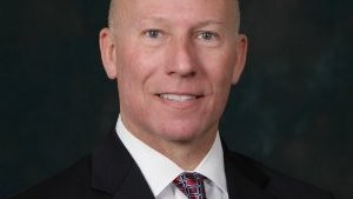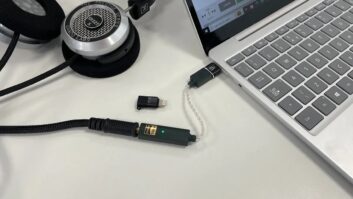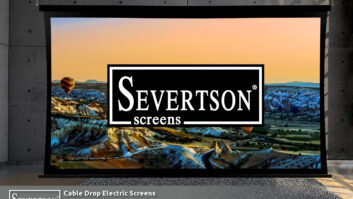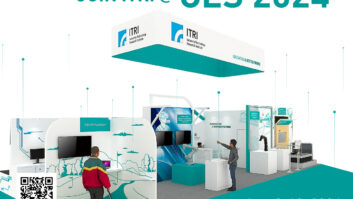Almost from the moment the consumer electronics and cable TV industries agreed on the first plug-and-play provisions in December 2002, these two constantly bickering constituencies got to work on phase two — interactive digital cable, a.k.a. bi-directional CableCARD, a.k.a. iDCR, a.k.a. plug-and-play II.
But from the look of things, the combatants won’t be settling whatever you call the plug-and-play sequel anytime soon.
In the meantime, eager TV manufacturers Samsung, LG, Panasonic and Thomson, have decided to go it alone by signing CHILA (CableCARD-Host Interface License Agreement), essentially acquiescing to the National Cable & Telecommunications Association (NCTA) view of the two-way cable world in order to get a competitive leg-up on their competition.
Last August, CableLabs certified a Samsung 56W-inch DLP HDTV configured to work on two-way cable systems. The company’s first iDCR-enabled HDTV is due to become available in October to coincide with the launch of the first two-way cable systems.
“The specifications and the process exists and are available to CHILA signatories today, and Samsung wanted to prove that these products can be built,” explains Steve Goldstein, Samsung’s consumer electronics senior business development manager.
But these companies are the exception, and are not likely to sway the larger negotiations, which seem stuck.
Plug-and-play I, also called uni-directional digital cable ready (UDCR), established the technical and regulatory foundation for the now ubiquitous CableCARD, enabling CE devices to be connected to any cable provider without an external set-top box.
Unfortunately, this version of the CableCARD system is uni-directional — CableCARD-equipped TVs can only receive information from the cable head-end. They can’t return signals for such actions as ordering video-on-demand (VOD) or pay-per-view (PPV) services.
As a result, according to the National Cable Television Association (NCTA), only 80,000 CableCARDs have been deployed out of an estimated 2.5 million CableCARD capable TVs in use.
The NCTA explanation for this vast discrepancy: Consumers are making an informed choice.
“No matter how many CableCARD-equipped sets are out there, we can’t drag a customer to our offices and say, ‘Here’s a CableCARD,’” says Neal Goldberg, general counsel for NCTA. “In the first plug-and-play order, the FCC stipulated that cable operators tell consumers about the limitations of one-way cards. When CableCARD sets won’t receive video-on-demand (VOD) or other interactive services, customers are turned off.
“While consumer electronics retailers may be right that some cable operators have said ‘You won’t get video-on-demand or pay-per-view,’ we are following the direction of the FCC to tell them about CableCARD’s limitations.”
Still, anecdotal accounts abound with stories of cable companies either purposefully talking CableCARD customers out of using the card in favor of the more profitable VOD and PPV-enabled set-top box, or simply telling them that CableCARDS are not available.
“Cable MSOs had no intention of supporting UDCR,” noted an executive for a leading TV manufacturer. “They lose a lot of control without a set-top box. They lose potential [pay-per-view] and on-demand services. Although the cable box is a substantial expense, it keeps everything in a controlled loop.”
It’s clear to both sides that CableCARD won’t be a complete solution until it can talk back to the cable head end.
What is a viable solution for iDCR is the Open Cable Applications Platform (OCAP), so-called middleware software that is essentially an operating system for a TV. OCAP is a universal standard for all two-way communication between a cable head end and consumer electronics devices, and allows the addition of third-party applications from digital photo viewers to reception of picture messages from cellphones.
“OCAP is the enabler to get any product from any manufacturer to run all the cable services including a program guide and on-demand,” said Don Dulchinos, advanced platforms and services senior VP at Cable Labs, which developed OCAP. “As long as I build that platform into the TV, those applications will run.”
On Dec. 1, both the Consumer Electronics Association (CEA) and the NCTA reported the state of their iDCR negotiations to the Federal Communications Commission (FCC), including their mutual acceptance of OCAP as the foundation upon which iDCR will be built. Gradual national deployment of OCAP will begin on Oct. 1, 2006, according to proposed FCC regulations from the NCTA. On April 1, 2007, subscribers can demand two-way access if their cable provider has deployed OCAP.
By July 1, 2008, operators with more than 2 million subscribers would be required to be OCAP capable, and full deployment by July 1, 2009 for all cable systems with more than 5,000 subscribers.
CEA and NCTA also both submitted separate reports outlining what they failed to agree on, including how testing and certifying OCAP-compatible devices would be carried out.
The most contentious issue remains over control of the operating system.
“Cable operators’ desire to exercise control over the design of competitive products … is unjustified and would lead to the stifling of innovation and variation in competitive products,” argued the CEA in its FCC filing.
The NCTA believes it needs to maintain control of all OCAP options and applications to ensure quality and consistency of service.
“CE products are going to have OCAP and the customer wants cable and they can get that,” added Dulchinos. “The question is, what’s happening inside the TV? Does it keep alive all the information on the cable guide so when the customer goes back the information will still be there? The CE manufacturers say, ‘That’s not our problem.’”
Dulchinos continued, “But it’s like a computer with multiple applications running. Consumers don’t want one application to cause another one to crash.”
CEA agrees that OCAP’s technical limits may fall short of device makers’ desires, but that these limitations are purposeful and unnecessary. “OCAP … was not designed or developed so as to support multifunction devices with non-cable related features,” noted the CEA in its FCC filing. “Indeed, as developed and documented thus far, it is geared instead to forbid, block, or interfere with the panoply of functions that competitive, multifunction [iDCR] products otherwise could offer to consumers.”
In its FCC filing, the NCTA did not agree: “Neither CE manufacturers nor cable operators are limited to innovations that fit within existing standards.”
But in the filing the bodies agreed that further “[j]oint engineering discussions are the preferred means for determining how improvements can be made and device resources can be shared practically between cable applications and other applications of the iDCR.”













